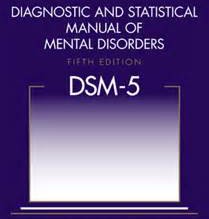- The Dream About Evidence
- The DSM in Five Versions
- Critique of the DSM
- Humans Are Split Specimens
- Soldiers with PTSD
- What Now?
This is blog entry three of a series of six. You can access the other blog entries by clicking their titles above.
The sorry situation of the DSM is not the sole responsibility of its editors. Just read or reread the warnings. The introduction to the watershed DSM-III explicitly states that the manual’s primary goal is scientific, not clinical. The reader is warned against using the manual as a simple handbook from which clinical answers may be inferred and used without consideration for real life contexts. The importance of doing a more thorough evaluation is stressed, as is the importance of remembering that health care workers work with, e.g., people with schizophrenia and not with schizophrenics.
That said, by the method it promotes, the DSM-III sets aside two fundamental principles from the Enlightenment. The first is the principle of the unalienable dignity of the individual and the second is the principle of careful and thorough deliberation. These principles were probably not intentionally set aside. Still, unconscious intentionality does not simplify the problem, nor does it spare us its potentially dire consequences.
A signature aspect of the new DSMs—i.e., DSM-III, IV, and 5—is giving categories absolute priority over conflicts—the addition of a dimensional aspect notwithstanding. The editors of the DSM-III do not seem to have considered that giving categories absolute priority over conflicts was a tried recipe for the exacerbation of conflicts and was as risky in the sphere of mental health as it had been in politics. Few societies have been as assiduous in the practice of categorizing as was Nazi Germany. It is surprising, to put it mildly, that Jewish psychiatrists in America were not more sensitive to the matter.
Obviously, the editors did not see it that way. It is of little consolation now that the chairman of DSM-III’s editorial team, Robert Spitzer, criticized the manuals shortly before retiring, asserting that they had contributed to pathologize 20-30% of the population who would otherwise have been considered within the bounds of normality. According to him, the problem is that the DSM-system operationalizes mental disorders without taking into consideration the context within which the symptoms manifest themselves. We can’t disagree with him here.
It is odd that the editors of the DSM-III could believe the warnings mentioned in the first paragraph above would have any preventive effect. The DSM-I and DSM-II—the psychodynamic versions—already contained warnings in a similar vein. The warnings did not keep the American psychiatrists of their day from significantly overdiagnosing. Furthermore, the earlier neurotic and psychotic diagnoses were from time to time degraded to mere caricatures, in ways not unlike what has since happened with the new system. Summarily reducing the difficulties of a patient no psychiatrist had spoken with in any consequential way to symptoms resulting from an Oedipus complex twisted by unconscious homosexuality would be an example.
With the DSM-III, psychiatrists thought they had established a more scientific framework that would inspire more care. It hasn’t turned out that way. The supposedly more scientific DSM-III, DSM-IV, and now DSM-5 have not curtailed the use of sticker diagnosing. On the contrary, the practice has exploded. The difference between then and now is that now psychiatrists overdiagnose across much of the planet.
Yet there is hope. Criticism has been on the rise and louder since the release of the DSM-5 in 2013—with the welcome participation of several of the manual’s previous editors. However, the current state of the debate may leave the uninitiated reader with the impression that difficulties have only recently surfaced, that it is the story of the derailing of a fundamentally sound scientific project. It is not the case. The problem was edited directly into the new DSM from the very beginning, i.e., at the time of the editorial work done on the DSM-III. As we will see, this is where the PTSD diagnosis comes in and has status of paradigm.
Next: Humans Are Split Specimens. You can access the next blog entry by clicking here.
2014-11-10


